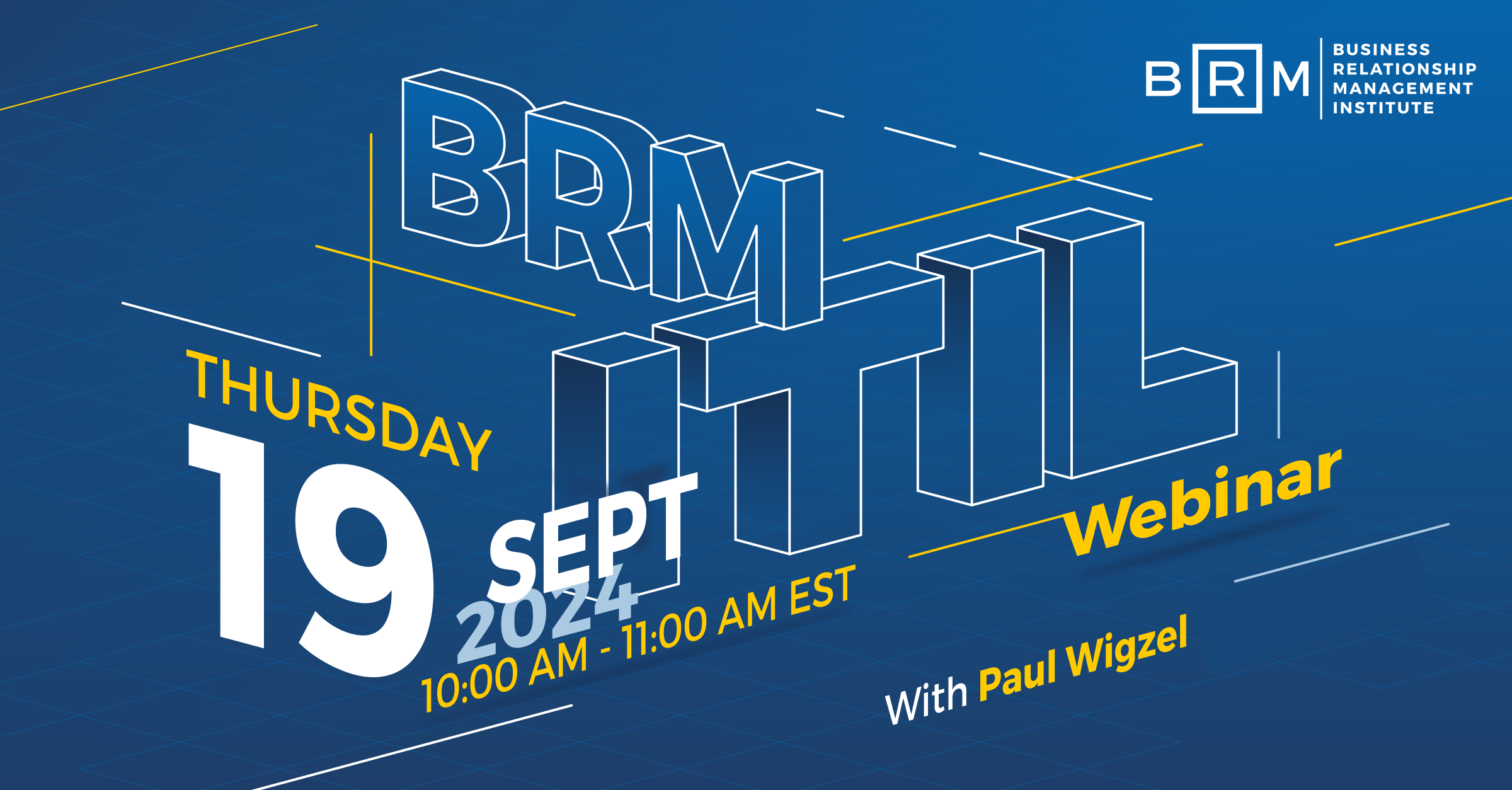The Power Duo: How BRM and ITIL Collaborate to Drive Value

To begin – What is ITIL?
ITIL is the name given to the best practice in Service Management. ITIL is a brand and a product. As a ‘best practice,’ this includes activities used by millions of businesses across the globe who consume or deliver services to customers or business partners as described by those in the business relationship world.
So, when thinking of Service Management, think of Cola because ITIL is the biggest and best-known soft drink brand. Usually when people ask for ‘a coke,’ what they mean to say is ‘they want a cola. Similarly, most people talk of ITIL when they really mean ‘excellent customer services.’
Before we delve further, let’s first dispel a certain myth – ITIL is about IT. This is false, though it was true in the 1980s/90s when ITIL first emerged as the Information Technology Infrastructure Library, but since then, technology (IT) has pervaded every aspect of consumerism and business interfaces. So, anyone who receives a service or delivers a service has been impacted by or used Service Management principles, i.e. ‘ITIL’.
With that in mind let’s consider if there is any link to Business Relationship Management (BRM).
Is there a link between ITIL and BRM?
Of course, you already know the answer is yes! but consider these additional questions (that may or may not be rhetorical):
- Is there any business that wouldn’t benefit from the limitless energy created within an organisation by adopting BRM principles, concepts and deliverables…No.
- And is there any business that wouldn’t benefit by following Service Management best practice? No.
But please don’t consider Service Management and Business relationship management as Coca Cola and Pepsi-Cola, or Apple and Microsoft, GM or Toyota, the US and Europe.
Consider them like the International Space Station and NASA. Service Management is predominantly European in its origin, but today it is a fusion of many best practices from across the world, brought together to form a structure that benefits everyone worldwide. But without the propulsion of Business Relationship Management (NASA) the best practice value diminishes, the outcomes less dramatic and the global improvement for everyone less obvious.
Now you might think this is fanciful and little overly dramatic, however, allow yourself to just consider a few possibilities. The International space station has been completed, its working and achieving scientific solutions to help the planet, but ‘no one’ can actually get there if our rocket technology, that energy, that drive has been terminated, downgraded or left in the 1960’s, when the visionary that was President Kennedy aimed for the moon landings. So, the propulsion of the BRM activity, needs to develop in line with the Service management deliverable.
Ok, let’s bring it to more obvious surroundings. You turn on a faucet/tap to draw a tumbler of water.
What are your expectations? What are the outcomes you are seeking? Hydration, thirst quenching, refreshment, dilution for food?
What are you expecting from that faucet? What are your business requirements? – What is the value proposition you are expecting, and have potentially paid for? Clean, drinkable fluid, free from parasites, germs and dirt? In other words, you’d expect crystal clear, cold and purified water.
Have you ever stopped to think about how that water reaches you? Who collects the rain, desalinates the ocean, who purifies the water and sifts the dirt from it, who checks if it’s fit for human or animal consumption, who transports it— how is it transported— who pumps it down the pipework infrastructure and ensures it retains its perfection to the outlet in your bathroom or kitchen sink?
The understanding of what you need from the faucet is where the role of the Business Relationship manager fits in. You might need a very different water product if you are running a farm, a vehicle washing business, a manufacturing company, a hotel, a food preparation company, a brewery …or just your home. Following this analogy, Service Management is the understanding of:
-
the need and management of the capacity
-
the availability, the cleanliness, and the peaks and troughs of requirement
-
what to do if a pipe breaks?
-
how to minimise a lack or excess of supply; how to cope in times of drought or storm
-
the customer help line, the management of the water, users demands, wants, and complaints
Without Service Management the work that the Business Relationship manager begins, is never concluded, without Service Management the BRM can never reach the levels of the strategic partner if they are too busy dealing with detail, minutiae and operational incidents to earn the opportunity to build upon customer relationships.
However, without Business Relationship management, Service Management would ‘hit and hope’ to deliver what the customer needs, especially when customers rarely understand those needs or what’s attainable. Additionally, Service Management may not have a grasp of the strategic direction that business partners seek or aim for, and would be unable to focus on delivery excellence if spend too much time trying to understand what the customer wants, when, how, or for how long? They would need to concern themselves with the basics before they could actually begin to look at what the customer really or actually needed.
It is perhaps an interesting thought for everyone next time you leave the shower on or run the water whilst brushing your teeth – how many people, processes and systems were required to bring just a single droplet of clean water to that shower head or faucet opening?
Putting some basic context to this
Removing analogies, Service Management is a framework of best practice advice and guidance for the delivery of services to customers.
Business Relationship Management is a strategic discipline that focuses on enhancing the value of relationships within an organization’s network to drive results that matter, not only delivering value to the organization but to the entire partner ecosystem. It equips teams with the skills to align cross-functional efforts, create cohesive strategies, and ensure that value flows across the organization and its entire partner ecosystem, fostering collaboration and long-term growth.
Business Relationship creates the ‘limitless energy’, (remember the rocket?) whilst Service management provides the structure and deliverables needed to achieve customer satisfaction, to plan and deliver the ‘customer journey’ that co-creates value for all stakeholders.
They are a symbiotic relationship. They flourish far better with the other in existence since they each support one another; neither dominant nor submissive by forming a partnership that underpins both. Together, they balance the chaos between the “what if we…” and the “how will we” to deliver the next evolution for organizational growth and sustainability.
Ready to Learn More About ITIL and BRM?
Click the image below to register for this upcoming webinar!
